Your Next Trip TRAVEL GUIDE
Yucatan
Dive into the heart of Mexico’s Yucatan state, where history, culture, and natural beauty collide. From sacred cenotes and vibrant Pueblos Mágicos to the breathtaking ruins of Chichen Itza and Ek Balam, this journey unveils the rich heritage of a region waiting to be explored beyond the beaches and hotspots like Cancun and Tulum.
Now, check out our recommendations featured in this episode and more!
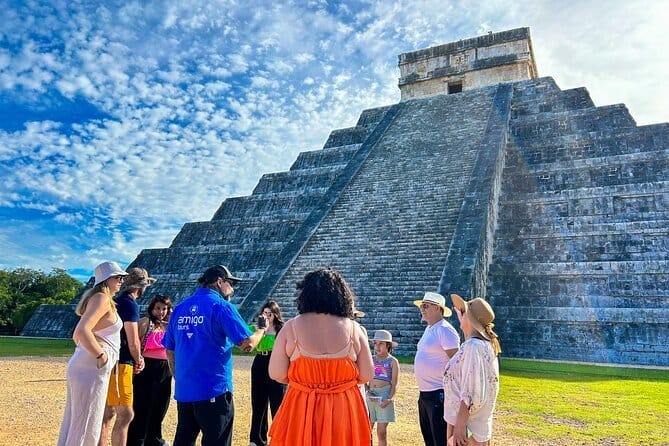
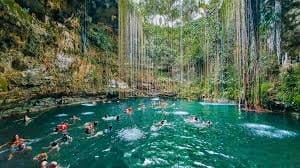
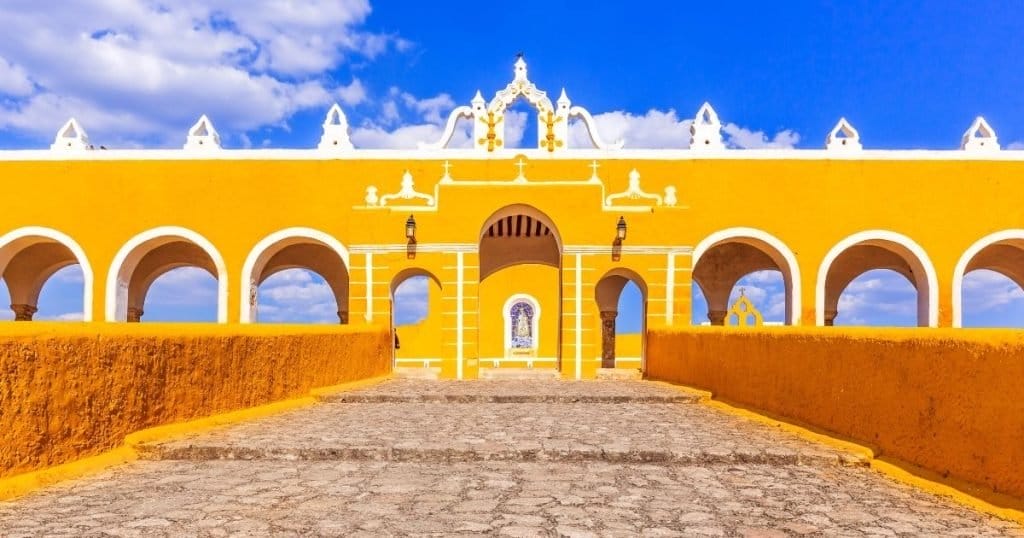
What to do
Chichen Itza
Explore one of the New Seven Wonders of the World, renowned for its iconic El Castillo pyramid and rich Mayan history.
- Address: Tinum Municipality, Yucatán, Mexico
- Hours: Daily, 8:00 AM – 5:00 PM
- Cost: Approximately $25 USD
- Website: Chichen Itza Tours
Cenote Ik Kil
Swim in this stunning open-air cenote surrounded by hanging vines and crystal-clear waters.
- Address: Carretera Costera del Golfo Km 122, Tinum, Yucatán, Mexico
- Hours: Daily, 9:00 AM – 5:00 PM
- Cost: Approximately $4 USD
- Website: Cenote Ik Kil Tour
Izamal – The Yellow City
Wander through this charming town, known for its yellow-painted buildings and a blend of Mayan and colonial architecture.
- Address: Izamal, Yucatán, Mexico
- Hours: Open 24 hours
- Cost: Free
- Website: Izamal Tours
Where to stay
Hacienda Temozon
Experience luxury in a restored 16th-century hacienda offering elegant rooms and a tranquil atmosphere.
- Address: Km 182 Carretera Merida-Uxmal, Temozon Sur, Abalá, Yucatán, Mexico
- Website: Hacienda Temozon
Hotel Casa San Angel
Stay in a boutique hotel located in the heart of Mérida, featuring traditional Yucatecan architecture and modern amenities.
- Address: Paseo de Montejo 1, Centro, 97000 Mérida, Yucatán, Mexico
- Website: Hotel Casa San Angel
El Mesón del Marqués
Enjoy comfort in a historic hotel situated in Valladolid, offering colonial-style rooms and an on-site restaurant.
- Address: Calle 39 No. 203, Centro, 97780 Valladolid, Yucatán, Mexico
- Website: El Mesón del Marqués
And there’s tons of other fabulous places to stay during your trip.
Check out the best accommodation deals below.


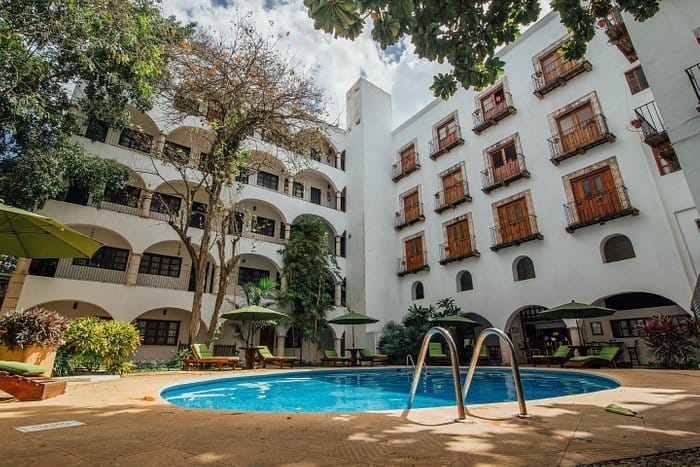

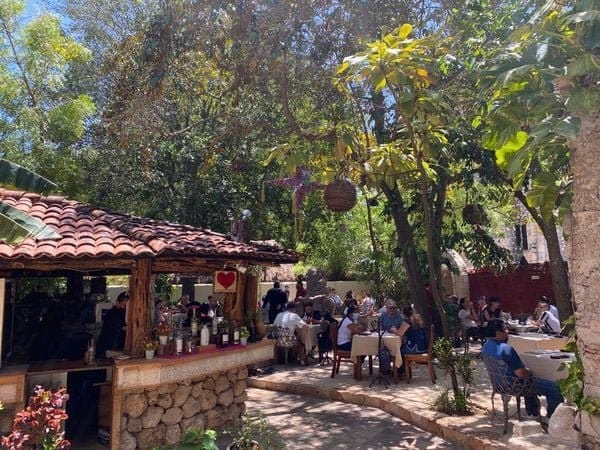
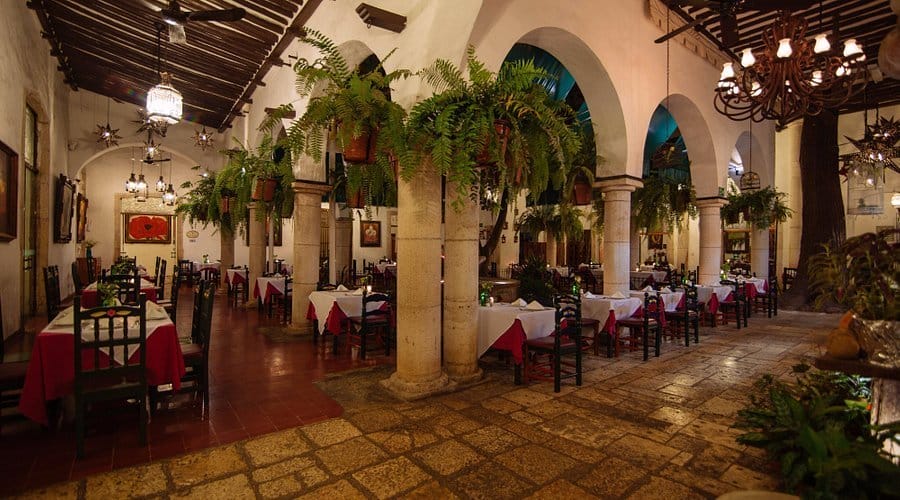
What to eat
La Chaya Maya
Savor authentic Yucatecan dishes like cochinita pibil and handmade tortillas in a traditional setting.
- Address: Calle 55 No. 510 x 62 y 64, Centro, 97000 Mérida, Yucatán, Mexico
- Hours: Daily, 7:00 AM – 11:00 PM
- Website: La Chaya Maya
Restaurante El Atrio del Mayab
Dine near the Convent of San Antonio de Padua in Izamal, offering regional cuisine and a charming courtyard.
- Address: Calle 31 No. 299, Centro, 97540 Izamal, Yucatán, Mexico
- Hours: Daily, 8:00 AM – 10:00 PM
- Website: El Atrio del Mayab
El Mesón del Marqués Restaurant
Taste local flavors in a historic setting within the hotel, known for its Yucatecan specialties and colonial ambiance.
- Address: Calle 39 No. 203, Centro, 97780 Valladolid, Yucatán, Mexico
- Hours: Daily, 7:00 AM – 10:00 PM
- Website: El Mesón del Marqués Restaurant
Travel Tips
Best Time to Visit
The best time to visit Yucatán is from November to April, during the dry season when the weather is cooler and more comfortable for outdoor activities. This period is ideal for exploring archaeological sites, swimming in cenotes, and enjoying the state’s vibrant festivals.
Avoid visiting between May and October, as this is the rainy season with higher humidity and occasional hurricanes.Getting Around
Yucatán is well-connected with various transportation options:
Public Transit: Buses are affordable and reliable for intercity travel, with ADO being the main operator.
Car Rentals: Renting a car is the best way to explore the region at your own pace, especially for visiting remote cenotes or archaeological sites.
Ride-Sharing: Services like Uber are available in Mérida but may not be reliable in smaller towns.
Safety Tips
Stick to well-lit areas and main roads, especially at night, as rural areas can be poorly lit.
Stay hydrated and use sunscreen, particularly when visiting outdoor sites like Chichen Itza or Ek Balam.
Avoid swimming in cenotes during heavy rains, as water levels and currents can become unpredictable.
Be mindful of wildlife, especially in more remote areas or near cenotes.Helpful Notes
Currency: The local currency is the Mexican Peso (MXN). Credit cards are widely accepted in tourist areas, but carrying some cash for small towns or markets is recommended.
Language: Spanish is the primary language spoken. In tourist areas, basic English is common, but learning a few Spanish phrases can be helpful and appreciated by locals.
Health: Mosquitoes are prevalent, especially during the rainy season, so bring insect repellent and wear protective clothing.
Plug Type: Type A (two-pin) and Type B (three-pin, grounded)
Voltage: 127V
Frequency: 60Hz

Packing list
Here’s our suggested items to pack for this destination. Please always consider the weather and activities you will be doing.
Clothing
- Lightweight, breathable clothing (linen or cotton) for warm days
- Comfortable walking shoes for exploring ruins and towns
- Water shoes for cenotes and beaches
- Sunhat or cap to protect against the sun
- Swimwear for cenotes and beaches
- Light jacket or sweater for cooler evenings (November–April)
Accessories
- Sunglasses with UV protection
- Reusable water bottle for staying hydrated
- Daypack or small backpack for excursions
- Waterproof bag for electronics and valuables at cenotes
Toiletries
- Sunscreen (reef-safe if visiting beaches)
- Insect repellent to guard against mosquitoes
- Travel-sized toiletries
- Hand sanitizer and wet wipes
Tech and Gear
- Phone and charger (with a portable power bank)
- Camera or GoPro for capturing memories
- Plug Adapter: A and B
- Travel guidebook or map
Documents and Essentials
- Passport (if traveling internationally)
- Travel insurance details
- Local currency (Mexican Peso) and a credit/debit card
Optional but Useful Items
- Waterproof phone case for cenotes
- Lightweight scarf or sarong for covering shoulders in churches
- Notebook or journal for documenting the trip
Get a full packing list and free downloadable template at Pack Better.
Ultimate Packing List Library
Find the perfect customizable packing list for all of your travel situations on our sister website Pack Better.
This episode of "Your Next Trip" explored the ancestral lands of
We extend our respect and gratitude to the Indigenous communities who have been the stewards of these lands for generations. Research for this acknowledgment was made possible using the NativeLand.ca.
Learn more about responsible travel practices in the TWD Responsible Travel Guide.
Visit the guideTrip provided by: Tianguis
Director of Photography: Marco Antonio Gutierrez-Garza
Editor: Muhammad Arsalan
Special Thanks: Enroute Communications, Gustavo Rivas-Solis, David Bacab, Julia Miller, Archeologist and Tour Guide





